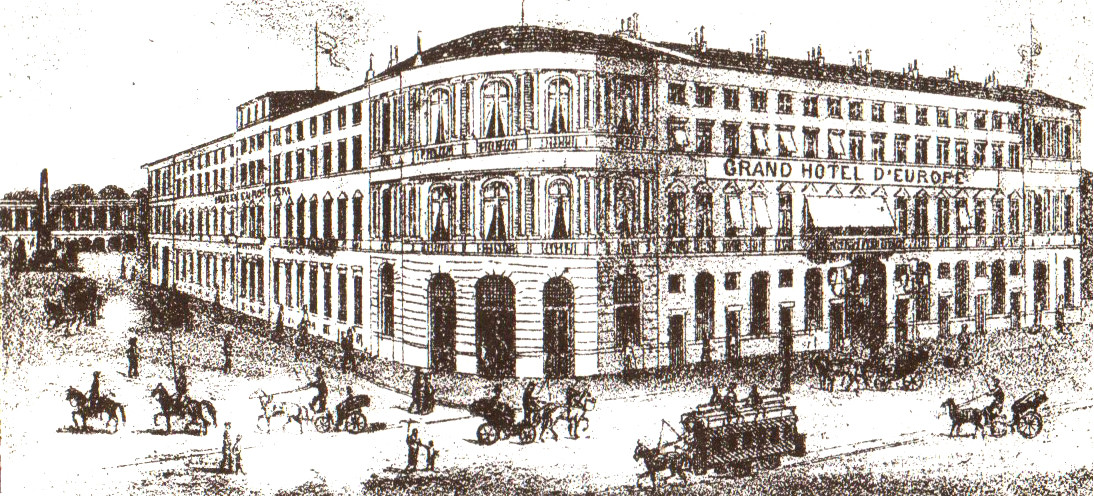
Europejski Hotel
[In order to celebrate the blessing of the new shop, Wokulski threw a festive dinner party in the best hotel in Warsaw]. The hall was adorned with flowers, huge tables placed in a horseshoe, music brought, and at six that evening, some hundred and fifty people gathered. (141)
On the Royal Route in Warsaw, in place of the palace formerly owned by the aristocratic families of the Radziwiłs and Lubomirskis, Władysław and Ksawery Pusłowski together with Aleksander Przeździecki built a hotel designed by Enrico Marconi. It took 20 years to complete the construction. The first stage was finished on 30 December 1856, when 90 hotel rooms were made available to the public. The whole project was finalised in 1878, and 240 rooms and apartments, decorated with refined elegance, were opened. The most demanding guests could choose from among several stylized apartments, ranging from the Empire style, to Louis Quinze with gilded furniture, to Louis Seize with white-and-blue furniture. Considered to be the most beautiful of the interiors, the Pompeii Hall with paintings by Karol Marconi was located on the first floor. There was a large hall on the second floor, where Aleksander Krywult organised exhibitions for many years. The first show was held in 1881, and displayed paintings by Jan Matejko, Józef Chełmoński, and Henryk Siemiradzki. In the following years, the salon des refuses exhibited works of the most famous Polish and European painters.
Józef Chełmoński’s and Aleksander Piotrowski’s studios were located in the hotel’s attic. Symbolist painter Adam Chmielowski (later Saint Albert) and Stanisław Witkiewicz used to live there. The celebrated actress Helena Modjeska came to pose there for a portrait painted by Chełmoński. Elegant shops were on the ground floor, however, the most famous establishment was Lourse’s restaurant and confectioner’s, where the celebrities of Warsaw came to gossip. Next to the confectioner’s, there was a hairdresser’s, a beauty parlour, and a currency exchange shop run by banker Radziszewski. At the end of the century, Skarżyński opened large wine cellars called Caves du Grand-Hotel d’Europe. The Europejski Hotel was the hallmark of the city. According to the 1881 guide, it is the most attractive lodging that Warsaw can offer to its visitors, both for a few days and for longer.
Bibliografia
- Grand Hôtel d’Europe Varsovie. Przewodnik po Warszawie wydany staraniem Wielkiego Hotelu Europejskiego w czterech językach, Warsaw 1881.
- A. Rottermund, Hotel Europejski, Warsaw 1972.



